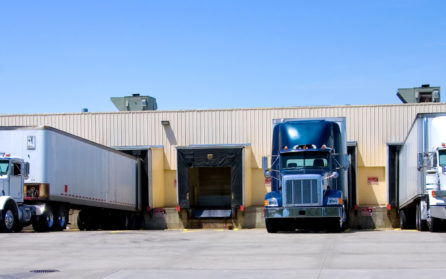Blog
With Cargo Theft on the Rise, Is it Time for a Logistics Partner Security Check Up?

Although many businesses prefer not to report incidences of theft, the Federal Bureau of Investigation (FBI) estimates that North American cargo losses amount to roughly $40 billion annually. And the Transported Asset Protection Association (TAPA) reports that 85% of all cargo losses involve trucks.
Truck-related theft occurs in many ways, ranging from thieves emptying out a trailer, to stealing the trailer outright, to driver/employee theft. Most vulnerable industries include pharmaceuticals, electronics, apparel, tobacco, alcohol and food. Thieves are more sophisticated than ever, and prepared to take advantage of any vulnerability in a logistics strategy.
Fortunately, the good guys have also upped their game, and better and more advanced technology is now available to help transportation providers protect shipments. In fact, TAPA offers guidelines for minimum standards that should be in place in all warehouses, freight facilities and vehicles. A sample of the TAPA standards includes:
- Mandatory background checks on all employees
- Satellite GPS tools to track stolen vehicle location
- Door alarms
- Security alarms
- Vehicle immobilization technology that can remotely disable a vehicle
- King pin locks that prevent a tractor and trailer from being separated
- Seals that limit intrusion and alert drivers if a door has been tampered with
- Highly secure warehouse facilities with security systems and closed circuit cameras.
- Physical barriers in place with enclosed cargo handling, shipping and receiving areas
- Physically manned, or electronically controlled gates at all entry/exit points
- CCTV system in place that offers “day/night” coverage of all external and internal areas, including all vehicle storage areas.
In addition, a logistics provider should be a member of the Customs and Border Protection’s trusted trade program called the Customs-Trade Partnership Against Terrorism (C-TPAT), through which businesses voluntarily certify the security of their own supply chains, as well as the supply chains of their suppliers. C-TPAT is a key part of U.S. border protection efforts, and in exchange for their participation, members receive expedited clearance and other benefits. To participate in C-TPAT, a business must undergo a rigorous application process that includes several site visits from CBP agents. C-TPAT membership has become an important way for a logistics provider to demonstrate that it is a secure and responsible supply chain partner. Any business considering enlisting the services of a logistics provider should make C-TPAT membership a key requirement.
A new white paper from Purolator International, “Damage, Theft and Disruption: Reducing Risk in Your Logistics Strategy,” examines external shipment risk caused by a range of factors including environmental disasters, supplier breakdowns, shipment damage and theft. With regard to minimizing the risk of theft, the paper makes clear that a shipper must ensure that its logistics partner has the necessary security protocols in place.
To download a complimentary copy of Purolator’s white paper, click here.